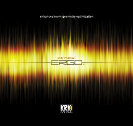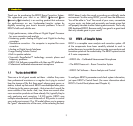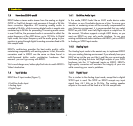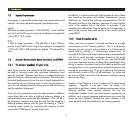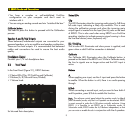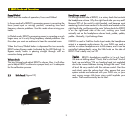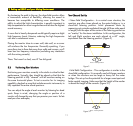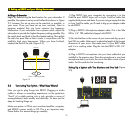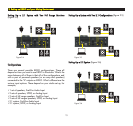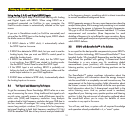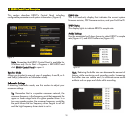
5
11..55 SSyysstteemm RReeqquuiirreemmeennttss
A co
mputer is required for performing room measurement and
analysis. Minimum required computer specifications are:
Mac®
800 MHz (or faster) processor • 256 MB RAM • 6-pin FireWire
port (or 4-pin FireWire port using 4-6 pin adapter, not supplied)
• Mac OS X 10.5 or later.
PC®
1 GHz (or faster) processor • 256 MB RAM • 6-pin FireWire
port (or 4-pin FireWire port using 4-6 pin adapter, not supplied)
• VGA with 1024 x 768 resolution (or higher) • Windows XP or
Vista.
11..66 AAccoouussttiicc EEnnvviirroonnmmeennttss,, RRoooomm CCoorrrreeccttiioonn,, aanndd EERRGGOO
11..66..11 IItt’’ss nnoott yyoouurr ssppeeaakkeerrss,, iitt’’ss yyoouurr rroooomm
Most studi
o monitors are created to be flat and precise, and to
be used in listening rooms with optimized dimensions and
acoustic treatment. However, most home or budget studios are
placed in less than ideal acoustic environments. This means that
the actual performance of your monitors is highly dependent on
the acoustics of your listening room. In fact, the perception of
your mix will change based on where you sit while monitoring
and the speaker’s placement.
To put this into perspective, extensive measurements in different
rooms show that even when a high-end system is placed in a
well-controlled room, peaks and dips between +10 to –20 dB in
the frequency response are more the rule than the exception!
Refining speaker design with the goal of creating a “linear”
sounding audio system by improving the linearity of each
component 0.2dB doesn’t actually help much.
In addition, it is obvious that even if the greatest of care is taken
over tweaking the system with cables, interconnects, power
stabilizers, etc., none of that will never compensate for 10 to 20
dB peaks and dips in the frequency response. It’s clear that the
room is the weakest link in the chain. In principle, if you
strengthen the weakest link, then the entire chain is improved. In
other words, improve the overall quality of your artistic projects
using ERGO.
11..66..22 RRoooomm CCoorrrreeccttiioonn ssoo ffaarr
Today
, most room correction is carried out based on a single
measurement at the listening position. This is problematic
because you are trying to solve problems in a 3 dimensional
sound field by taking a 1 dimensional measurement. To
accomplish this feat would require extraordinary acoustical skills
and luck to reach the right conclusions based on this single
measurement – so if this does work for you, you should head
out to your local store and buy a lottery ticket immediately! Even
taking a number of positions around the listening position and
averaging them is not a good solution, as tests have shown that
moving the microphone just 10 cm (4 in) relative to the listening
position easily results in 20 to 40 dB deviations. So, unless you
are a very skilled in acoustics, the chances of making a wrong
decision are huge.
Another crucial decision is how to define on the ideal target
response – logically, if you don’t know the target, it is
impossible to get there. Instead of making measurements at the
listening position, some systems measure the way the
loudspeaker couples to the room (the acoustic impedance). In
addition, such a power response measurement can correct the
issues you have “globally” through the room. However, it will
never perfectly solve the problems at the listening position.
11.. IInnttrroodduuccttiioonn



